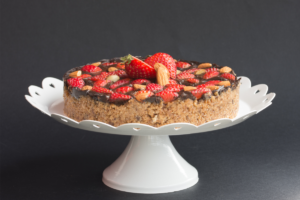If you are gluten-intolerant or have a wheat allergy, coeliac disease, or choose a gluten-free diet for the long term, baking high-quality baked goods will be more difficult. Gluten gives bread its elasticity and cakes its lightness.
Baking cakes without gluten is now a possibility, thanks to the growing demand for such items. However, these flours require some practice on cooking with them.
There are many recipes that can show how to bake desserts without gluten. Rice, soy, chestnut, buckwheat, corn and potato flour are a few of the available options for baking cakes or pastries and cooking bread.

Tips for baking Gluten-Free cakes
- Make your own blend of flours or ground nuts and flours. By adding sorghum or tapioca flour to a blend, you’ll increase its softness and absorbency- which is ideal for lighter cakes and pastries. Ground oats would also work well in these baked goods. If you’re looking for something denser, ground almonds, pistachios and hazelnuts could be added to the blend.
- Polenta, a grain-based product that has an unmistakable texture, helps to create moist cakes. Northern Italian desserts commonly use the ingredient.
- Using xanthan gum, to some degree, can compensate for the crumbly texture of gluten-free flours and help reduce the risk of your cake crumbling. Additionally, adding a quarter a teaspoon of xanthan gum per 200g/7oz will improve your pancakes’ structure. You can also substitute in guar gum or a two way.
- To make a lighter cake, add more gluten-free baking powder than the recipe requires.
- Gluten-free diets use flours that absorb liquid differently than wheat flour. Increase the amount of broth, milk, or water you’ll be adding to your recipe by a tablespoon and mix it with your dry ingredients before adding any wet ingredients.
- Baking a gluten-free cake for 5-10 minutes longer than usual may be necessary to ensure it is cooked through (as the batter contains more liquid). Check if the cake is fully baked by inserting a skewer and seeing if there are any raw bits.
- Decreasing the temperature and doubling the cooking time for gluten-free baked goods will inhibit them from browning on top.
Read More About: Tips For Baking Gluten-free Breads And Pastry
Watch out for…
- If you bake gluten-free, be sure to look for a baking powder that is specifically made for food without gluten.
- Bicarbonate of soda, which is usually gluten-free.
- In the United Kingdom, icing sugar is gluten-free. In other countries, it can contain modified starch to bulk up or fill in for less refined sugars. Typically, cornstarch is used as a bulking agent, but wheat starch might also be used in some cases.
- Oats are naturally gluten-free, but they may be prepared in an environment where wheat is present, so it’s essential to read the ingredient list and buy oats labelled gluten-free.
Read More About: Bbq Restaurants Give Moms A Day Off They Deserve

